Protopresbyter Alexander Kiselev: How the New Martyrs of Russia
Were Glorified (to the 35th Anniversary of the Canonization)
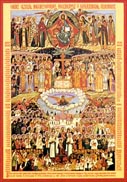 Those who have never been in the Synodal Cathedral of Our Lady “of the Sign” in New York, the cathedra of the First Hierarch of the Russian Orthodox Church Outside of Russia, should imagine a huge hall belonging at one time to a very wealthy American family, which over twenty years ago became a church. The wondrous three-tiered iconostasis, icons, frames, all infused with prayer and with the presence there of the holy relic of the Russian Church, the Miracle-working Kursk-Root Icon of the Mother of God (before which St Seraphim of Sarov received his first healing)--all this has long ago erased any traces of a hall in a worldly house and gave us a cathedral which can hold almost a thousand people. Those who have never been in the Synodal Cathedral of Our Lady “of the Sign” in New York, the cathedra of the First Hierarch of the Russian Orthodox Church Outside of Russia, should imagine a huge hall belonging at one time to a very wealthy American family, which over twenty years ago became a church. The wondrous three-tiered iconostasis, icons, frames, all infused with prayer and with the presence there of the holy relic of the Russian Church, the Miracle-working Kursk-Root Icon of the Mother of God (before which St Seraphim of Sarov received his first healing)--all this has long ago erased any traces of a hall in a worldly house and gave us a cathedral which can hold almost a thousand people.
From the street, through wrought-iron gates, one can see a spacious flagstone courtyard with two wide, turning staircases rising up to the second floor, where three enormous glass doors lead to the Cathedral.
On Saturday, 31 October, at 5 pm, all this was already overflowing with worshipers who came to the last pannikhida for the New Martyrs of Russia.
All 16 bishops attending the Council emerged from the altar for the pannikhida (only two were absent due to reasons of health), headed by Metropolitan Philaret, the First Hierarch of the Russian Orthodox Church Outside of Russia, along with a host of clergymen. A seemingly endless list of names of New Martyrs was read at the litanies: clergymen, headed by His Holiness Patriarch Tikhon, members of the Royal Romanoff family, headed by Emperor Nicholas II, names of monastics and laymen, famous and unknown, of various rank and calling, age and sex, including children who accepted a martyric death for Christ. These hundreds of names represent only a small fraction of the millions of sufferers, behind each of whom is a whole story, a human drama, with years of suffering and torture, not to speak of losses, separations, tears, abandonment...
Only a few hundred of those who are being glorified today were commemorated by name. The many thousands who were included to our lists of New Martyrs, but those about whom there was a lack of exact details or testimonies were not named. This does not mean that their martyrdom is questioned. Until there is confirmation, they exist in the continuing process of glorification—we pray for them: “Their names, o Lord, Thy knowest,” in time they will be included. But then “Eternal Memory” was intoned, the singing of which quickly, like fire, swept through the entire temple, and the thousand-strong crowd of worshipers joined the choir and the clergy, so it seemed that the very walls of the church are singing; the final pannikhida was over.
Vigil began. The altar, it seemed, was more crowded than the church. At times during the service, not all the clergymen emerged from the altar, but only some, for it was too difficult to stand in the proper order, to exit the altar, and return to it because of the lack of room. The entire host of clergy only emerged for the actual magnification (polyeleos), which consisted of the opening of the reliquaries of Holy Martyr Grand Duchess Elizabeth Feodorovna and Novice Barbara, and the removal of the covering from the new icon of the New Martyrs and Confessors of Russia, the grace-filled beseechers of the Lord for our people. I stood in fourth place in accordance with seniority among the priests, on the right side, that is, right near the relics and the icon: but I could not see how the martyrs’ relics were removed over the shoulders of the Metropolitan, the Protodeacon and others. What could those standing farther away have seen? Absolutely nothing. How is it, then, that they stood for 6-7 hours in a row (the anointing and veneration of the relics and icon lasted until after midnight), compressed into a mass of humanity?
Of course, the people did not just stand, they prayed. And of course, they waited for the opportunity to venerate the relics, but one must take another thing into account: the life of the Church is not rational. The Church, as the mystical Body of Christ, possesses a special charisma, whose power exceeds that of all human reasoning. This power can be felt during church gatherings, during especially important church events, processions of the cross, pilgrimages… It was felt among us then, during this great occurrence, the glorification of the New Martyrs of Russia.
The life of the Church is not just preaching the word of truth, but the recreation of it in real life. Where it happens, where prayer unites with deed, the life of the general consciousness of the people is created, an irrational consciousness. During the glorification, the cathedral and surrounding areas did not contain 2000 separate individuals, and not a crowd without inner unity--in the cathedral stood the CHURCH: the holy residents of Heaven, the bishops, Orthodox people, breathing another kind of air, not knowing why and how. That is how they could stand for seven hours, and that is why they uttered to each other: "Christ is Risen!" and "Rejoice!"
That is why it is proper to sing before church meetings: "This day the grace of the Holy Spirit gathers us..."
And so, the holy relics were uncovered. The relics, the portion brought from Jerusalem (the right hand of Holy Martyr Grand Duchess Elizabeth and the bone from the forearm of Holy Martyr Novice Barbara), came from our Gethsemane Convent, where they arrived in January 1921. The story of the murder of Grand Duchess Elizabeth Feodorovna, the sister of the Empress, along with five other Dukes of the Royal Family, Novice Barbara and F.M. Remeza, the story of who she was and what she did in Russia, and also how her coffin reached Jerusalem, can be found in the book Pamyat' ikh v rod i rod ["Their Memory for Generation Upon Generation"] (published by St Seraphim Foundation).
We cannot stop here on the details of the opening of the coffins in Jerusalem of the Holy Martyrs Elizabeth and Barbara, which would require an entire book: I will speak only of the relics themselves. When they set about to uncovering them, it turned out that there was not one, but five coffins, one inside the other, each containing two martyrs, which was apparently necessary due to the long trek through Siberia and China to Palestine. The first, outer coffin was iron. It had rusted to the point that it crumbled at the touch into separate pieces. The inside of the coffin, however, contained the partially uncorrupted relics of two martyrs of Christ.
What are relics? The Church calls relics the remains of any reposed Orthodox Christian. In the book called the trebnik [Book of Needs], the rite of burial, it says: "having entered the house wherein the relics of the departed one lie..."
The Orthodox East considers it a sign of holiness when the body corrupts quickly, when clean bones remain; we in Russia think the opposite: it even caused consternation when a righteous person's body disintegrated. Such frustration was present, for example, when the coffin of St Seraphim of Sarov was opened, revealing only his bones. In what way to the remains of a holy person differ from that of a regular person? Not in that the former exhibit complete or partial corruption, but that through them (even if they are nothing but bones), help is provided, miraculous help, the power of the saints to whom the bones belong. This power is expressed not only from the surviving portions of the body, but even through their things, their clothing...Even the shadow of the passing Apostle Peter performed miracles and healings. Thanks to this, the glorification of the New Martyrs of Russia occurred through the opening before us of the holy relics and the holy icon of the New Martyrs.
And so the holy relics were opened: the cloth was removed from a very large icon of the New Martyrs. Metropolitan Philaret returned to his cathedra among the other bishops, the censer spread aromatic incense all around, and the choir sang, for the first time on earth, the magnification for those whose life was drained out of them one drop of blood at a time, who traveled that terrible path of martyrdom in our day: “We magnify you, O holy new martyrs and confessors of Russia, and we reverence your honored sufferings, which ye endured for Christ.”
Unfortunately, every word of this prayer can be read without feeling, automatically. But each word can also be spoken from the utter depths of a person, it can overturn everything inside a person, it can perform a miracle. I can barely remember how I sang the magnification, I barely noticed how they sang around me, but it felt like thunder, like some unearthly din. I cannot describe what I felt during those minutes. When I raised my head, I saw tears in the eyes of the people around me. Many faces shone brightly. The truth of the words of the service to the New Martyrs: “Abundantly watered with the sweetness of grace, set forth before us in the fragrance of their holiness, that, edified by their struggle, with compunction we may also offer unto God the fruit of repentance.”
Truly inscrutable are the ways of God. Allowing our country to befall terrible destruction, the Lord preserved, outside its borders, a clump of Russia Abroad. The glorification of the New Martyrs of Russia, impossible under the god-battling communist state, is being performed by the part of the Russian Church that is abroad. Yet there is more. The Lord allowed that the only holy relics known to us to exist to be abroad, having traveled during the Civil War through Siberia, China, the Middle East and end up in Jerusalem, in our Gethsemane Convent. May no one say that the glorification of the New Martyrs was a usurpation of the rights of the Russian Church by the part of the Russian Orthodox Church that is abroad. The holy act of glorification is being performed by the very Hand of the Lord!
“O victims for God who were buried alive, cast down into a well-like pit! First among you the passion-bearer Elizabeth, the merciful princess who strove for the things of heaven, finding the pearl of Orthodoxy in her new homeland, who in accordance with the Gospel forgave the slayer of her husband, and who pleased God with prayer and charity, yet was not spared by the godless! Pray also for us, ye holy princes! Pray for all, O venerable passion-bearer Barbara! Hearken unto us, ye who were buried in the Garden of Gethsemane! Give ear to us, ye whose place of burial is unknown!” (From the new service to the New Martyrs of Russia).
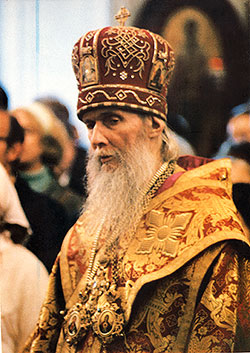
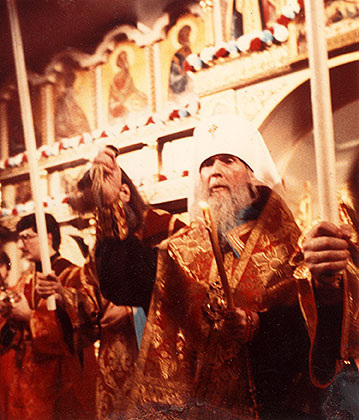
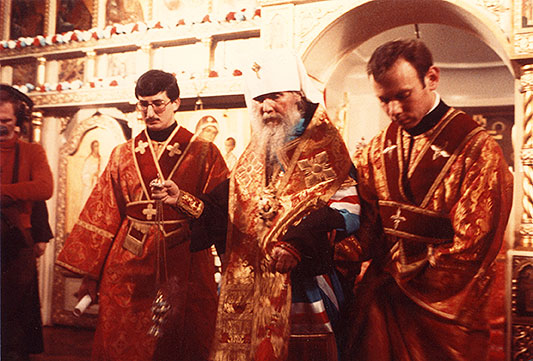
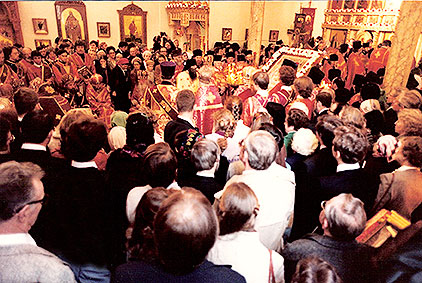
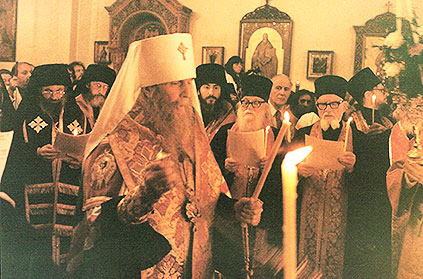
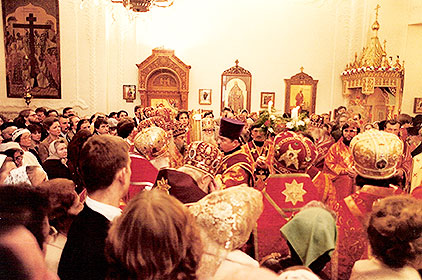
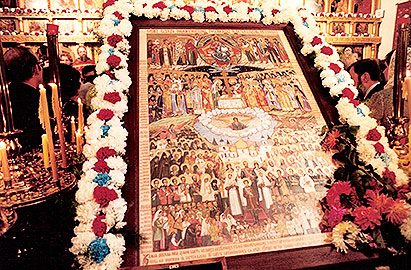
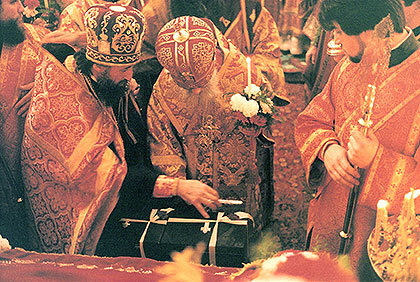
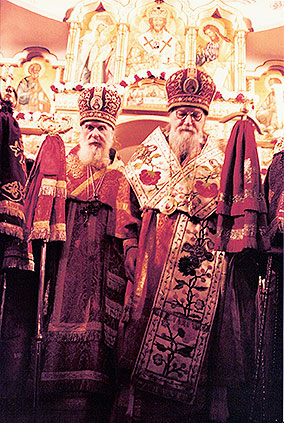
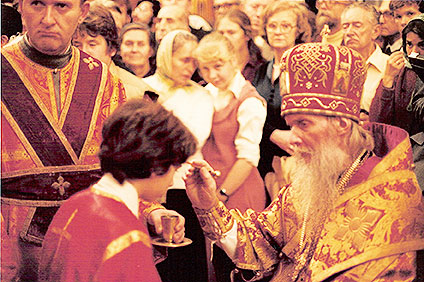
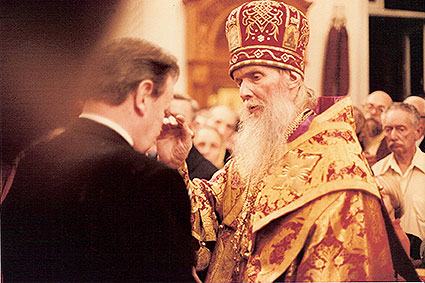
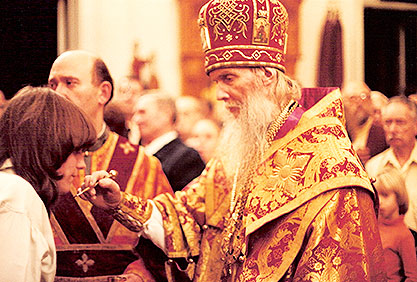
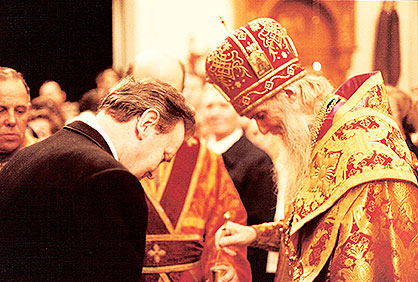
|